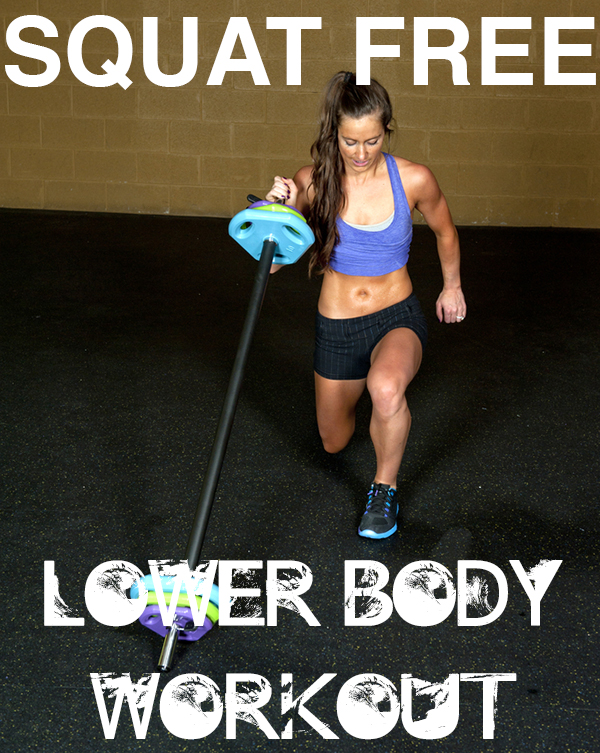
I love squats because they are functional and efficient. Squats strengthen the muscles that keep us mobile and independent. Every time we sit in a chair or use the bathroom we are squatting. When we can no longer do those things on our own we are in trouble.
So imagine the challenge for those who cannot do squats as a form of exercise. I encounter people all the time who can’t perform a squat, because of injury or chronic conditions, include squats as part of their exercise program. It can be a frustrating situation for both client and personal trainer. While this does present a unique challenge it doesn’t mean they have to resign themselves to a lower body workout of machine driven exercises like the leg extension.
Machines can have their place in a strength training program; however, some of them do put the body in an unnatural position. They don’t mimic real world movements. We live in a 3D world and are meant to move in multiple planes. Strength training is most effective for most people with movements that mimic real life motions. Also many clients have limited equipment at home. By necessity, programs must be designed that utilize simple tools like resistance bands and their own body weight.
If squats are painful or have been forbidden by your doctor, there are still many exercise options for your lower body. Try this workout combination for an effective leg workout sans squats. Do 2-3 sets of each exercise, 10 – 12 repetitions per set.
Step-ups: A step up can be done with an aerobic step, a weight bench or a stair in your home. I prefer a weighted version (holding a dumbbell in each hand), but you can do it with just your own body weight, especially if you use a higher step like a weight bench. Make sure to keep your weight in the heal of the foot leading, not the toe, during this movement. For variety, you can also move laterally (facing parallel of the step and stepping up to the side) or add upper body movements like shoulder presses.
Standing Hip Flexion: This exercise comes close to the quad strengthening seated leg extension I mentioned earlier. However, in a standing position with a resistance band you engage more stabilizer muscles in your legs and core. Secure a resistance band to a sturdy and low anchor, like a couch. Attach the other end of the band to your right ankle or foot. Stand up straight, holding onto the wall or back of a chair. Bend your right leg to 90 degrees and lift your right knee to hip height, hold for a one second pause and the return to start.
Hip Thigh Extension: This version of a single leg bridge is not only a great shaper for your glutes, it also works the muscles in the front of the leg. Lie down on the ground, face up, with the left knee bent and left foot flat on the ground. The right leg will be extended straight with the heal slightly off the ground. Lift your hips and lower back off the ground while keeping the right leg extended straight. Hold for a one second pause and then return to the starting position, keeping the right leg engaged and slightly off the ground until the last repetition. Switch side and repeat the same number of repetitions with the left leg extended.
Reverse Lunges: Taking your lunge in reverse can take some pressure off the knees. I often have clients who can’t do squats or forward lunges but who feel no pain going in reverse. These can be done with just your own body weight or a dumbbell in each hand. No matter the direction, always pay attention to proper form. Toes and knees should be pointed forward and the front knee should stay over the ankle with a vertical shin. There is no need to bring the back knee all the way to the ground, just aim for a 90-degree angle in both knees. For an extra core challenge hold a dumbbell in only one hand while lunging with the opposite leg.
Kettlebell Swings: Kettlebell Swings are a hinging movement, not a squatting one. They are great for the posterior chain and can help you get your cardio, too! Boost the cardio effect by doing extra sets of swings (up to 10) at the end of the workout with minimal rest in between.
Muscle burn is OK when you workout. Muscle fatigue is part of the process. Otherwise, pain is not part of the program. If squats cause you pain, you can (and should) stop. These moves will help keep you functional and fit without machines or extra ibuprofen!
Also Read:
4 Effective Ways to Make Your Body Weight Workouts Harder
